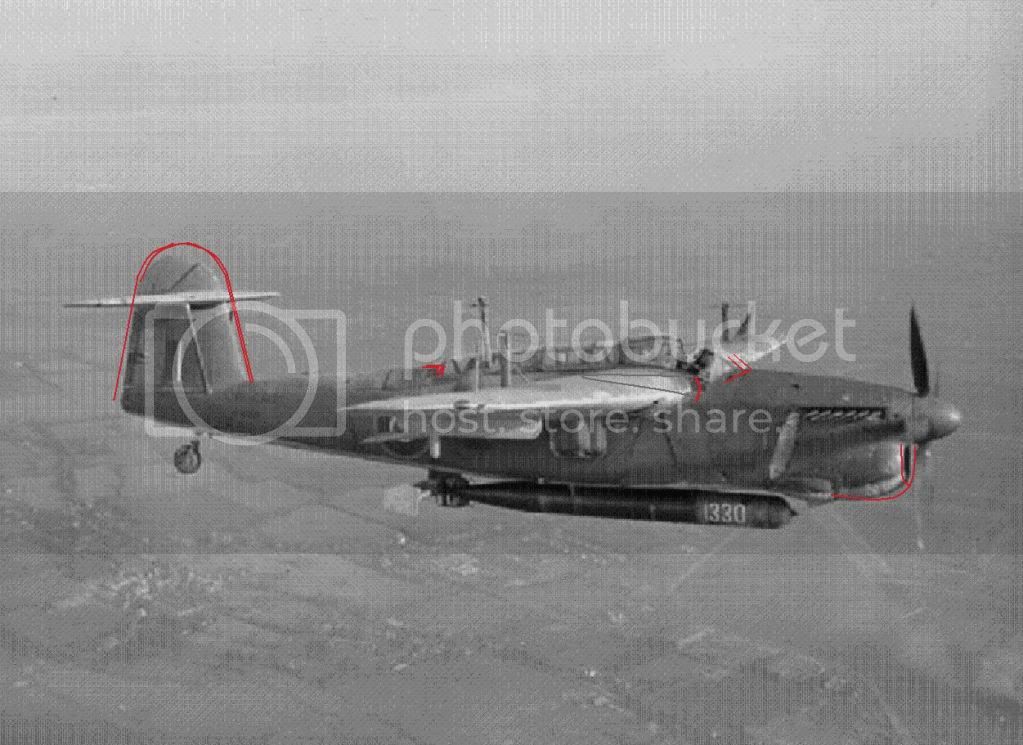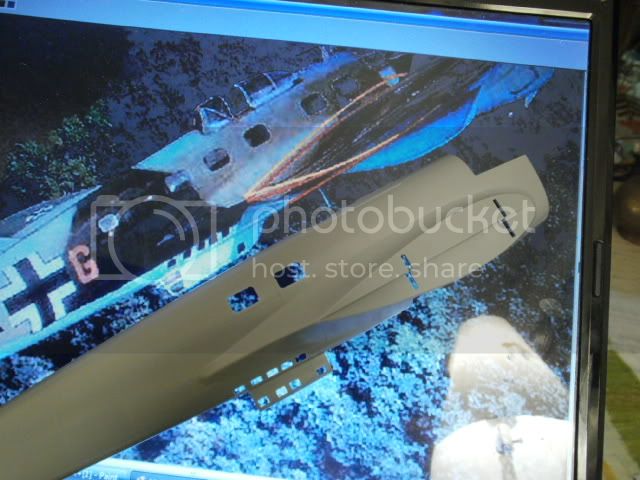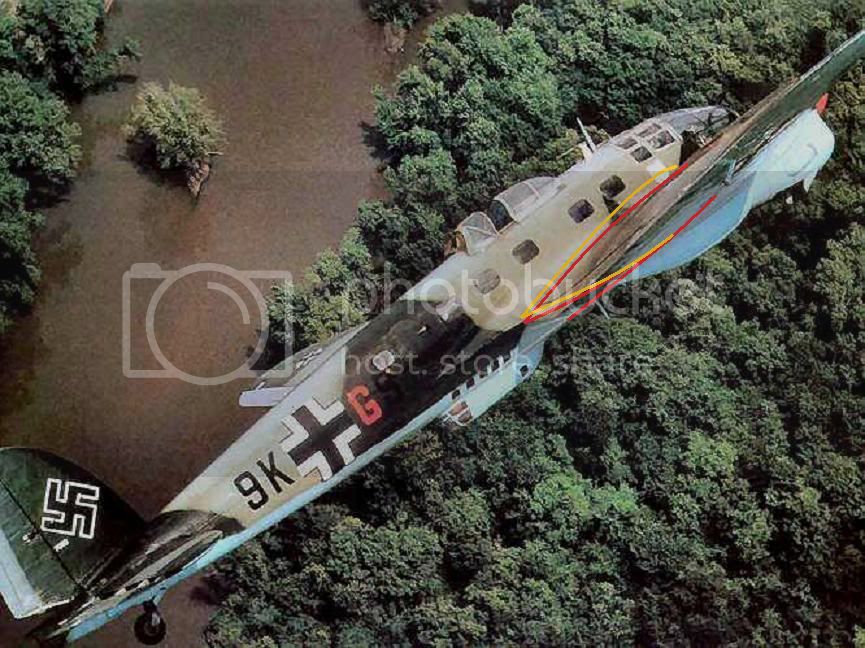Quoted Text
Quoted Text
I explain the "washout" in my post: Basically the leading edge has a different, flatter, dihedral than the thickest part of the wing itself.
Twaddle; the angle of attacklessens, as the leading edge moves out. Basically the wing has a built-in twist; it has nothing to do with the dihedral
Quoted Text
The effect was really major on the FW-190A, which could use its strong ailerons to hold the stall and thus preferred to turn fight horizontally at low speeds (below 210-220 mph) where it out-performed any other european day fighters in prolonged sustained turns (including the Spitfire) but not in higher Gs in unsustained turns
More twaddle; the 190 pilots preferred to use superior height (which they usually had) to make a slashing attack, dive through, and keep going. In a turning fight, Spitfire pilots found that they could turn inside the 190; it was in the rolling plane that they couldn't cope.
For the first point, I -never- said it had anything to do with the main wing dihedral, but it does mean if you draw a line along the peak of the leading edge of the wing, that line WILL have a flatter dihedral angle...
As for the relative performance and use of the FW-190A and the Spitfire, your total ignorance on this point is not your fault, as that misconception is in line the current (abyssmal) state of the knowledge, with the notable exception of the more experienced combat pilots of the era whose practical opinion obviously don't count as much as engineering theory in our great "scientific" age...
Johnny Johnson obviously didn't think the Spitfire Mk V out-turned the FW-190A...:

Quote: "I asked the Spitfire for all she had in the turn, but the enemy pilot hung behind me like a leech-It could only be a question of time..."
"Vertical Turn" here is vintage slang for "Vertical Bank Turn": If you want to blind yourself otherwise please do so...
And, unfortunately for what one might assume of his closing comments about the Mk IX, sustained turns was one of the few areas the Mk IX offered no help in turns over the Mk V...: This is an RAE evaluation of the Mk IX vs the Mk V:
"At 15,000 feet there was little to choose between the two aircraft although the superior speed and climb of the Spitfire IX enabled it to break off its attack by climbing away and then attacking in a dive. This manoeuvre was assisted by the negative 'G' carburettor, as it was possible to change rapidly from climb to dive without the engine cutting. At 30,000 feet there is still little to choose between the two aircraft in manoeurvrability, but the superiority in speed and climb of the Spitfire IX becomes outstanding."
Hundreds of combat accounts of the Spitfire Mk IX show an aircraft exclusively used in vertical combat to a remarkable extent (especially compared to the obsessive and successful horizontal turner that was... The P-47D!), and, unlike the P-47D, the Spitfire strenuously avoided any prolonged turn contests (but might have had a very tight initial radius)...
For good reasons, the P-47D was a feared turn fighter, as the Germans found out in their tests: Quote: "The P-47D (needle prop) out-turns our Bf-109G" Source: "On Special Missions: KG 200"
A few non-theoretical quotes from the now far away real world...:
A quote from Hurricane pilot John Weir (click on John Weir link):
http://www.vac-acc.gc.ca/remembers/s..._101/SF_101_03 "A Hurricane was built like a truck, it took a hell of a lot to knock it down. It was very manoeuvrable, much more manoeuvrable than a Spit, so you could, we could usually outturn a Messerschmitt. They'd, if they tried to turn with us they'd usually flip, go in, at least dive and they couldn't. A Spit was a higher wing loading..."
"The Hurricane was more manoeuvrable than the Spit and, and the Spit was probably, we (Hurricane pilots) could turn one way tighter than the Germans could on a, on a, on a Messerschmitt, but the Focke Wulf could turn the same as we could and, they kept on catching up, you know."
Quote from an Oseau demise witness (Jagdwaffe, "Defence of the Reich 1944-45" Eric Forsyth, p.202): "Many times I told Oseau the FW-190A was better than the Bf-109G........ Each turn became tighter and his Bf-109 (Me-109G-6AS) lost speed, more so than his (P-51D) adversaries."
Osprey "Duel" #39 "La-5/7 vs FW-190", Eastern Front 1942-45:
P.69 "Enemy (FW-190A/F) pilots never fight on the vertical plane.---The Messerschmitt posessed a greater speed and better maneuverability in a vertical fight"
P.65 Vladimir Orekov: "An experienced Fw-190A pilot practically never fights in the vertical plane"
Weirner Steiz: "The 190 was a much better aircraft than the 109: You could curve it"
Reichlin assessment team report of Dec 10, 1941 (FW-190A-1 vs Me-109F): "In terms of maneuverability, it (FW-190A) completely outclassed the Me-109. The Focke-Wulf could out-turn and out-roll the Messerschmitt at any speed."
Russian 1943 book:
"Germans will position their fighters at different altitudes, especially when expecting to encounter our fighters. FW-190 will fly at 1,500-2,500 meters and Me-109G at 3,500-4,000 meters. They interact in the following manner:
FW-190 will attempt to close with our fighters hoping to get behind them and attack suddenly. If that maneuver is unsuccessful they will even attack head-on relying on their superb firepower. This will also break up our battle formations to allow Me-109Gs to attack our fighters as well. Me-109G will usually perform boom-n-zoom attacks using superior airspeed after their dive.
FW-190 will commit to the fight even if our battle formation is not broken, preferring left turning fights. There has been cases of such turning fights lasting quite a long time, with multiple planes from both sides involved in each engagement."
-Squadron Leader Alan Deere, (Osprey Spit MkV aces 1941-45, Ch. 3, p. 2: "Never had I seen the Hun stay and fight it out as these Focke-Wulf pilots were doing... In Me-109s the Hun tactic had always followed the same pattern- a quick pass and away, sound tactics against Spitfires and their SUPERIOR TURNING CIRCLE. Not so these 190 pilots: They were full of confidence..."
S/L J. B. Prendergast of 414 Squadron recorded in his Combat Report for 2 May 1945 (Mk XIV vs FW-190A):
I observed two aircraft which presumably had just taken off the Wismar Airfield as they were at 800/1000 feet flying in a northerly direction and gaining height.-------The other E/A had crossed beneath me and was being attacked by my No. 2, F/O Fuller. I saw my No. 2’s burst hitting the water--------The E/A being attacked by my No. 2 did a steep orbit and my No. 2 being UNABLE TO OVERTAKE IT broke away."
Gray Stenborg, 23 September 1944 (Spitfire Mk XII): "On looking behind I saw a FW-190 coming up unto me. I went into a terribly steep turn to the left, but the FW-190 seemed quite able to stay behind me. He was firing at 150 yards-I thought "this was it"-when all of a sudden I saw an explosion near the cockpit of the FW-190, upon which it turned on its back."
http://www.airpages.ru/eng/ru/fw190a.shtml "They also noted the obvious Focke-Wulf advantages: excellent all-round view without object distortion, good HORIZONTAL handling in all speed ranges,"
A translated Russian article from "Red Fleet" describing Russian aerial tactics against the German FW-190, from Tactical and Technical Trends, No. 37, November 4, 1943.
http://www.lonesentry.com/articles/t...bat-fw190.html Quote: -"The speed of the FW-190 is slightly higher than that of the Messerschmitt; it also has more powerful armament and is more maneuverable in horizontal flight."
My favourite quote of all:
-"the FW-190 will inevitably offer turning battle at a minimum speed."
Love that "inevitably"

-"Coming out of a dive, made from 1,500 meters (4,650 ft) and at an angle of 40 to 45 degrees, the FW-190 falls an extra 200 meters (620 ft)."
The above means it is not great for boom and zooming (shudder)...
-"Throughout the whole engagement with a FW-190, it is necessary to maintain the highest speed possible. The Lavochkin-5 will then have, when necessary, a good VERTICAL maneuver, and CONSEQUENTLY, the possibility of getting away from an enemy attack"
-"In fighting the FW-190 our La-5 should force the Germans to fight by using the vertical maneuver."
-"FW-190 pilots do not like to fight in vertical maneuvers."
I could go on, but is it not funny how they ALL say the exact same thing?
Gosh! The conventional wisdom could not actually be wrong now could it? After all, we are all much smarter today than they were back then: Scientific Proof: IQ tests averages have risen 3 points every decade since WWII...
So these first hand conclusions are all, you know... Delusional... And that they all agree exactly is just, you know... Coincidence... Real sad...
Gaston
























